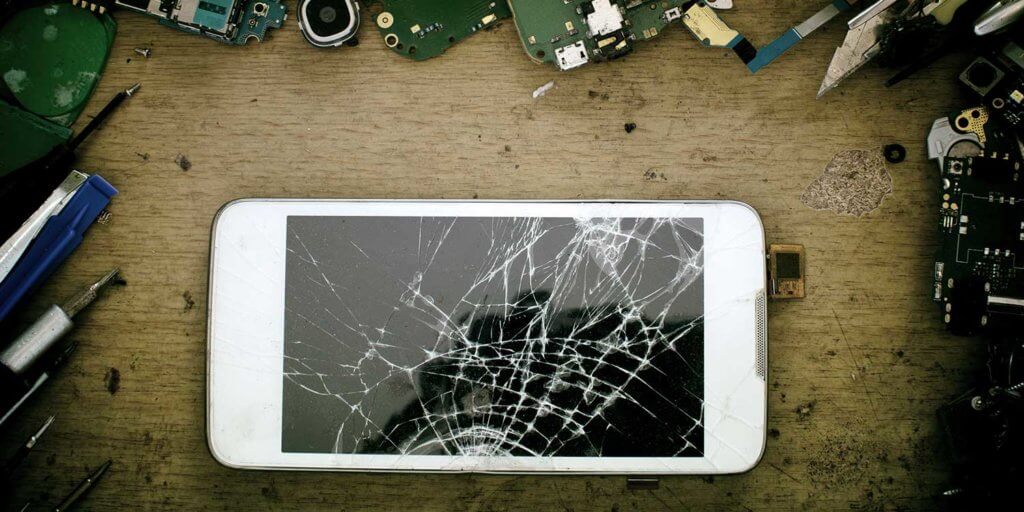Cruising holidays, coal, aviation fuel: it is now well known that these are three of the biggest emitters of greenhouse gas and CO2 of our time. These are the biggest producers of carbon dioxide. But there is another thing that is at least as harmful to the environment and the climate: consumption. Consumption in fashion and technical equipment is the most important factor here. In this blog post we will explain why the consumption of clothing and technical hardware in particular is extremely harmful to the environment and how you can slightly reduce your CO2 footprint and negative ecological impact without changing your habits too much. After all, climate protection is our responsibility.
Bought but never worn
Let’s start with clothes. In our throwaway society, many people spend money on clothes they never or rarely wear. In Germany, on average every 5th item of clothing remains unworn in the closet at home and goes straight into the trash. That’s 20% of all clothes.
And now consider the following:
- Use of pesticides for the extraction of the raw cotton material
- Mass production and manufacturing of clothing using toxic chemicals
- Import from distant countries like Cambodia, India, China and Bangladesh
All these factors mean that the CO2 impact of most items of clothing is much worse than, for example, of 10 plastic bags that we reuse several times instead of throwing them away immediately.

A new smartphone at least every two years
Technical hardware also has a huge carbon footprint. Smartphones, televisions, computers and game consoles, for example, are being replaced more and more frequently, even though the old devices are still perfectly fine.
Let’s be honest:
- Do you always buy a new smartphone or a new PC only when the old device is unrepairable and defective?
- Or do you use the arguments of the manufacturers like better resolution, more memory and new features to get a new model before the end of your old Smartphone / PC’s life?
With two-year contracts and the promise of the latest device, manufacturers and network operators have been fuelling this trend for years. What remains are huge mountains of electronic waste containing large amounts of problematic substances, which until now have been difficult or impossible to recycle.
The majority of toxic electrical waste in African countries ends up in Ghana. The United Nations estimates that between 20 and 50 million tons of waste per year end up there alone. Then, the “wealthy scrap” is exploited and raw materials such as copper or gold are searched for. The rest is burned. This produces toxic smoke, which is released directly into the atmosphere without anyone bothering to use filters.

Avoid garbage and electronic waste, reduce carbon emissions: you can do that!
Reducing our CO2 footprint is as easy as it is difficult to implement: we need to consume less!
Since many people find it extremely difficult to consume less, here are a few ways to reduce our CO2 footprint and our carbon emissions despite consumption.
Let’s start with the clothes!
- Only buy what you really need – sounds easier than it is.
- Buy used stuff. Very often you can find new, practically unworn clothes on eBay or in the classifieds. You can also save a lot of money buying second hand.
- Support local shops: buy from smaller local stores – they produce quality clothes nearly pollution-free and don’t result in too many carbon emissions.
- Going to a tailor’s shop for alterations is always better than throwing away clothes that no longer fit.
As for technical devices and hardware:
- As long as the old device is still fully functional, resist the urge to have a new model of something every one or two years – sounds easier than it is for some but doing that will really help you to protect the Earth from climate change.
- Buying used and selling old devices – but remember to delete your personal data with a data shredder.
- Dispose of them correctly. Batteries and electrical waste do not belong in the household waste, but in the recycling center. Also, electronics stores are obliged to recycle your old devices without you having to buy anything new for them.
- Software updates instead of hardware replacements: it is not always necessary to buy a new device to get the latest features – sometimes it’s enough to update the firmware or drivers.
- And here’s our tip for slow, aging PCs and laptops: Use maintenance tools like AVG PC TuneUp Utilities to optimize and clean your old computer to make it as good as new. That’s a much cheaper and environmentally friendly alternative to a new PC.
Further tips to help you reduce your carbon footprint
Of course, the superfluous consumption of IT and clothes are only two of many levers that can be tweaked to reduce carbon emissions. Below is a short list of known and maybe less known tips to reduce your CO2 footprint. These tips aren’t going to save tons – but you can certainly cut CO2 emissions by a few grams or kilograms over the course of a year:
- Use green electricity or electricity from renewable energy sources or try to use less electricity/energy to reduce your carbon footprint.
- Let banks, insurance companies, employers etc. send you important documents by e-mail, not by post to your address.
- Search queries via Google and Co. consume a lot of energy, which results in more carbon emissions. If you know a page on the Web, enter the URL directly in the browser to save time and energy.
- Rely on sustainable products and don’t stuck up on perishable food.
- Save quite a few dollars by doing without your car more often. The use of bicycles and public transport are good alternatives.
- Locally grown food has a lower carbon footprint than fruit and vegetables from overseas.
- The optimal room temperature for sleeping is between 16 and 18 degrees. You can usually achieve this even in winter without having to turn up the heating.
- Try to reduce the amount of waste in your household if possible.
- Showering saves water and energy

